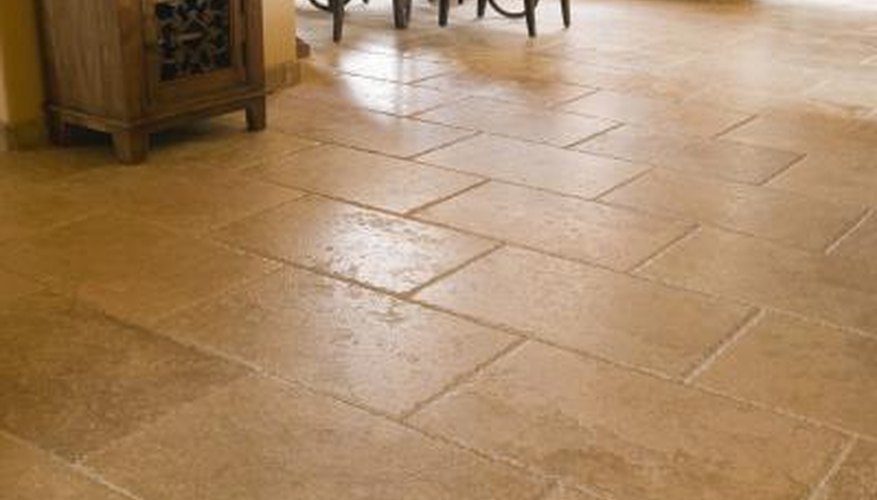Stone is hard, but that doesn't mean it is indestructible. Nearly all stone can be scratched, including the natural stone tiles that are in use throughout many homes. Sometimes the scratches are shallow, going only into the sealant on top of the stone. But often scratches go deeper, into the stone itself. When natural stone tiles become scratched and worn, it is time to spruce them up. This can be as easy as sanding the stone, preferably using diamond polishing pads.
- Stone is hard, but that doesn't mean it is indestructible.
- Sometimes the scratches are shallow, going only into the sealant on top of the stone.
Clean the scratched area using warm water and dish soap. If an entire floor is scratched, damp mop the floor with warm water and dish soap. Wipe the floor with a mop or rags, and use plain water to rinse the soap off. Allow the floor to dry.
Feel the scratches with your finger. If a scratch is deep enough for your finger to feel it, sand the area of the scratch starting with the 120-grit diamond polishing pad. Diamond polishing pads are available at many hardware stores, home improvement centres and online. Polish using a circular motion. Feather the polishing out on both sides of the scratch so the polishing itself does not become an eyesore. Continue polishing the scratch until you can no longer feel it easily with your finger. You can polish by hand or use polishing pads that attach to an electric drill. Follow all manufacturer's instructions.
- Feel the scratches with your finger.
- Continue polishing the scratch until you can no longer feel it easily with your finger.
Wipe the area with a cloth dampened with plain water, then wipe dry with another cloth. Continue polishing with your 150-grit pad until the scratch disappears almost completely. Wipe the scratch with a damp cloth, and then wipe with a dry cloth. The scratch now should be so shallow that you cannot feel it with your finger.
Polish the area with successively finer polishing pads until you reach the 400-grit pad. Polish with the finer pads only until the stone looks and feels smooth. Wipe the area with a damp cloth and then a dry cloth. Inspect the area from several angles and with lighting at different angles, making certain that the scratch is completely gone. If not, use your 400-grit polishing pad until the scratch is completely invisible.
- Wipe the area with a cloth dampened with plain water, then wipe dry with another cloth.
- Polish the area with successively finer polishing pads until you reach the 400-grit pad.
Clean the entire floor with a mop, warm water and mild dish soap. Rinse with plain water and a mop. Allow the floor to dry, and then apply stone floor sealant, which is available at hardware stores, home improvement centres, flooring companies and online. Use a damp mop, following the manufacturer's instructions. Allow to dry, also following instructions; fans can speed the drying time.
TIP
Start by sanding an out-of-the-way area with your 120-grit diamond polishing pad to make certain that sanding will not damage the tile more than improve it. There are a variety of polishing pastes designed for specific types of stone tiles that you can use to remove scratches. The pastes come with polishing pads. Polishing pastes are generally only useful for eliminating extremely shallow scratches; diamond polishing pads remove deeper scratches more quickly.
